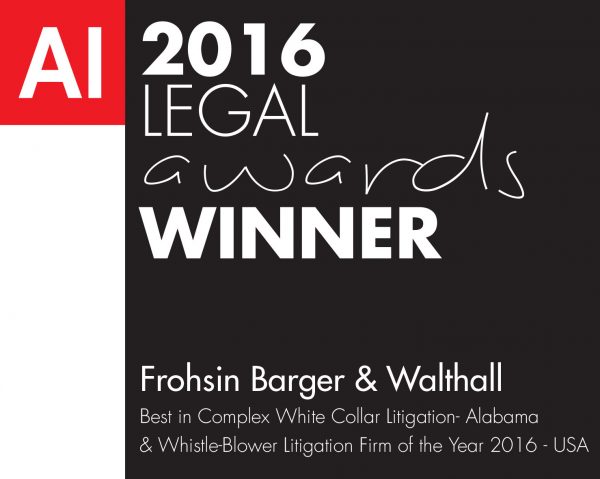What is the False Claims Act?
Written in the Midst of the Civil War
Often called Lincoln’s Law, the federal False Claims Act was passed with overwhelming bipartisan support and signed by President Abraham Lincoln in 1863 on the very same day that it arrived on his desk. In the midst of this country’s bloodiest struggle — while the fabric of our nation was torn apart — profiteers looted the Union military by selling diseased mules, defective cannons, cardboard boots, and uniforms made of so-called “shoddy cloth” loosely knitted from glued rags that rotted away when the troops got wet. Lincoln’s False Claims Act encouraged private citizens to bring lawsuits to expose and heavily penalize corrupt contractors. The law was based upon British common laws dating back to 1335, whereby whistleblowers were rewarded for protecting the property of the crown.
The False Claims Act and its antique precursors are known as qui tam laws after the first two words of the Latin phrase: qui tam pro domino rege quam pro se ipso in hac parte sequitur, translated “[one] who sues in this matter for the king as well as for himself.” Whistleblowers under the False Claims Act are known as “qui tam relators,” because they “relate” information, exposing corruption and fraud against the United States.
The Modern False Claims Act
A 1981 Government Accounting Office report lamented: “The sad truth is that crime against the Government does actually pay.”
The modern False Claims Act likewise could be named for President Reagan, who re-invigorated the statute after devastating amendments slipped past Congress almost in secret during World War II had all but killed it (not coincidentally the 1943 gutting of the False Claims Act occurred just as unscrupulous government contractors were posed to perpetrate unprecedented levels of fraud). Thirty years later — at the height of the Cold War when military spending again had skyrocketed in response to perceived Soviet intervention around the globe — reports of $400 hammers and $600 toilet seats angered taxpayers and caught the attention of Congress.
Without inside whistleblowers to keep the profiteers in check, the early 80’s were a free-for-all for fraud against the taxpayers. But Reagan’s 1986 False Claims Act amendments sought to change all that and eventually saw the taxpayers themselves become the most effective fraud fighters in our nation’s history.
Whistleblowers Now Save Billions for the Nation and are Justly Rewarded for Their Efforts
Between 1986 and 2013, nearly $40 billion was recovered for the United States under the False Claims Act, and whistleblowers received over $3 billion in qui tam awards plus attorneys’ fees and costs. Because the False Claims Act mandates trebling of damages plus severe penalties, 100% of whistleblower awards are paid by Defendants in successful qui tam suits. More than 70% of all false claims recoveries come from whistleblowers.
Since 2009, Frohsin Barger & Walthall client settlements and cases have returned nearly $200 million to the federal treasury and have resulted in nearly $30 million in whistleblower awards plus attorneys’ fees and costs.
How False Claims Act Qui Tam Suits Work
Quick Qui Tam Facts:
- Attorneys paid through % of award + defendants pay hourly fees and costs
- Suits initially filed under seal “in secret”
- Where DoJ intervenes, award =15-25% of recovery
- Where DoJ declines, award =25-30% of recovery
- Defendants pay 3 x fraud damages plus penalties, fees, and costs
Qui tam suits under the False Claims Act initially are filed under seal, which essentially means “in secret.” They are not disclosed to the public and are not served on or disclosed the defendant. The complaint is served only upon the Attorney General of the United States, and the United States Attorney in the district where the action is filed together with a written disclosure of substantially all material evidence and information the person possesses. During the seal period, which by statute must be at least sixty days but may in actuality last years, the Dept. of Justice evaluates the case, tests its merits, assesses its resources, and determines whether it will intervene and take over the case.
If the Dept. of Justice intervenes, then whistleblowers and their attorneys share in between 15% and 25% of any recovery, which by statute must be 3 times the amount of the fraud. If the Dept. of Justice chooses not to intervene, then whistleblowers and their attorneys may elect to continue the case on their own and share in between 25% and 30% of any recovery. If the case results in a settlement with a monetary payment or in a favorable verdict, then whistleblowers’ attorneys are additionally able to recover hourly fees and costs incurred while pursuing the case.
We Stand With Taxpayers Against Fraud
Frohsin Barger & Walthall is a member firm and longstanding supporter of Taxpayers Against Fraud (www.TAF.org), a nonprofit, public interest organization dedicated to combating fraud against the government and protecting public resources through public-private partnerships.
“Frohsin Barger & Walthall Whistleblower Receives $15 Million Award”
Frohsin & Barger is an AV Martindale-Hubbell rated law firm
Receiving Preeminent ratings in both peer and client reviews. Our lawyers have been designated Top Attorneys, Best Lawyers, and Alabama Super Lawyers and have been recognized by the American Bar Association, National Association of Criminal Defense Lawyers, and the Litigation Counsel of America.



